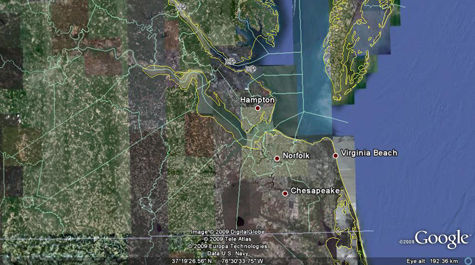VIMS professor contributes to ocean in Google Earth
Research by Diaz and Swedish collaborator Rutger Rosenberg shows that the number of dead zones—areas of seafloor with too little oxygen for most marine life—has increased by a third between 19995 and 2007.
The pair says that dead zones are now "the key stressor on marine ecosystems" and "rank with over-fishing, habitat loss, and harmful algal blooms as global environmental problems."
Google Earth version 5, launched last week at the California Academy of Sciences in San Francisco, enables users to dive beneath the surface of the sea and explore the world's oceans. It is the first time the popular software package has provided data on the 70% of the Earth's surface covered by water.
Since its inception in 2005, Google Earth has been downloaded more than 500 million times. The tool is available in 41 languages, and Google estimates that users spend 1 million hours a day using it and its sister product, Google Maps.
Users can access Diaz's dead zone data within Google Earth by opening the "Layers" pane and navigating to Ocean/State of the Ocean/Dead Zones. The newest version of the program can be downloaded for free by browsing to http://earth.google.com/ocean.
Each dead-zone location in Google Earth (marked by a skeletal fish icon) includes data on the nature of the dead zone (periodic, seasonal, or persistent), its size, the date it was first observed, its impact on fisheries, its impact on deep-water ecosystems, and a reference.
Diaz plans to continue to update his dead-zone database as new information becomes available.

















